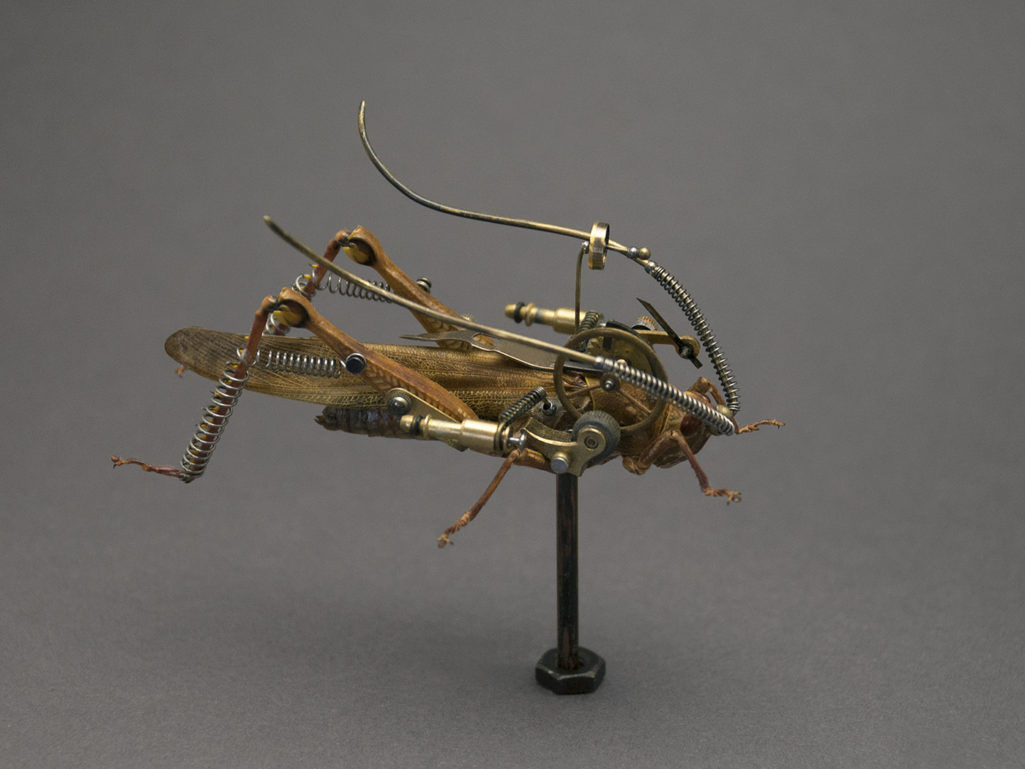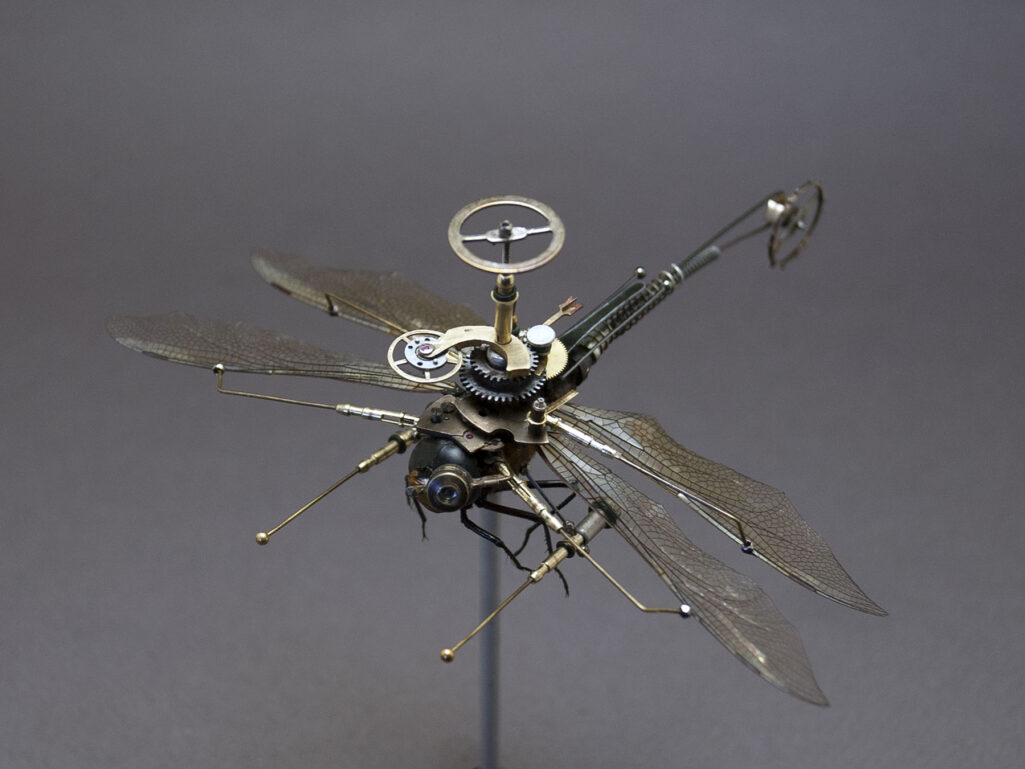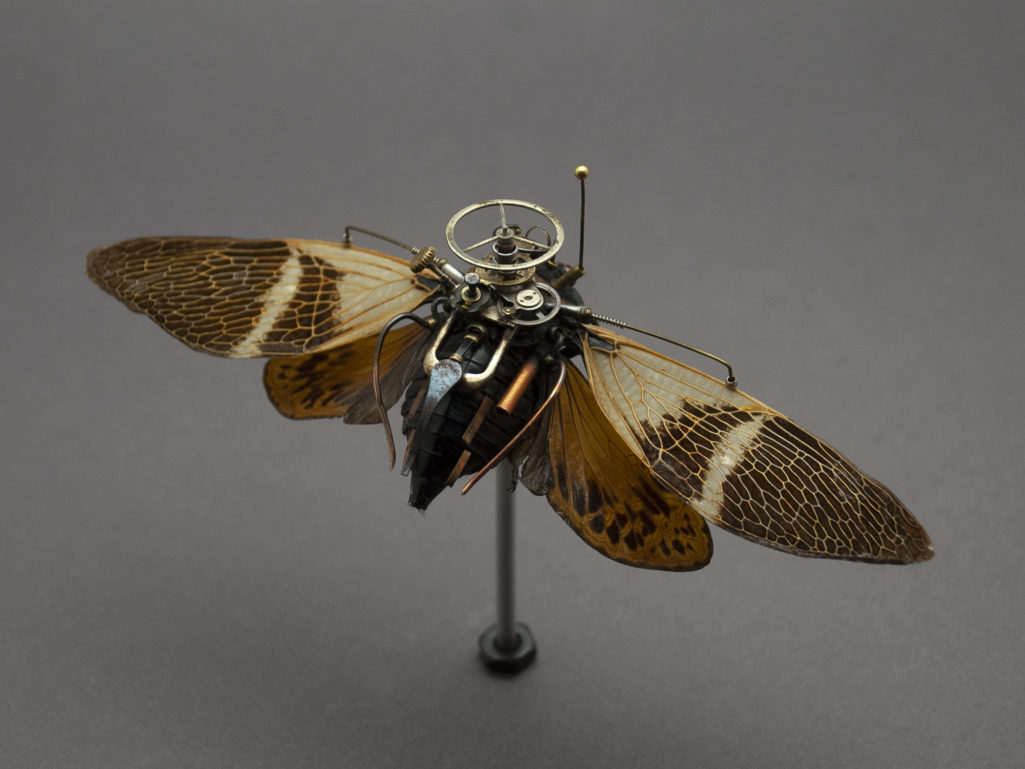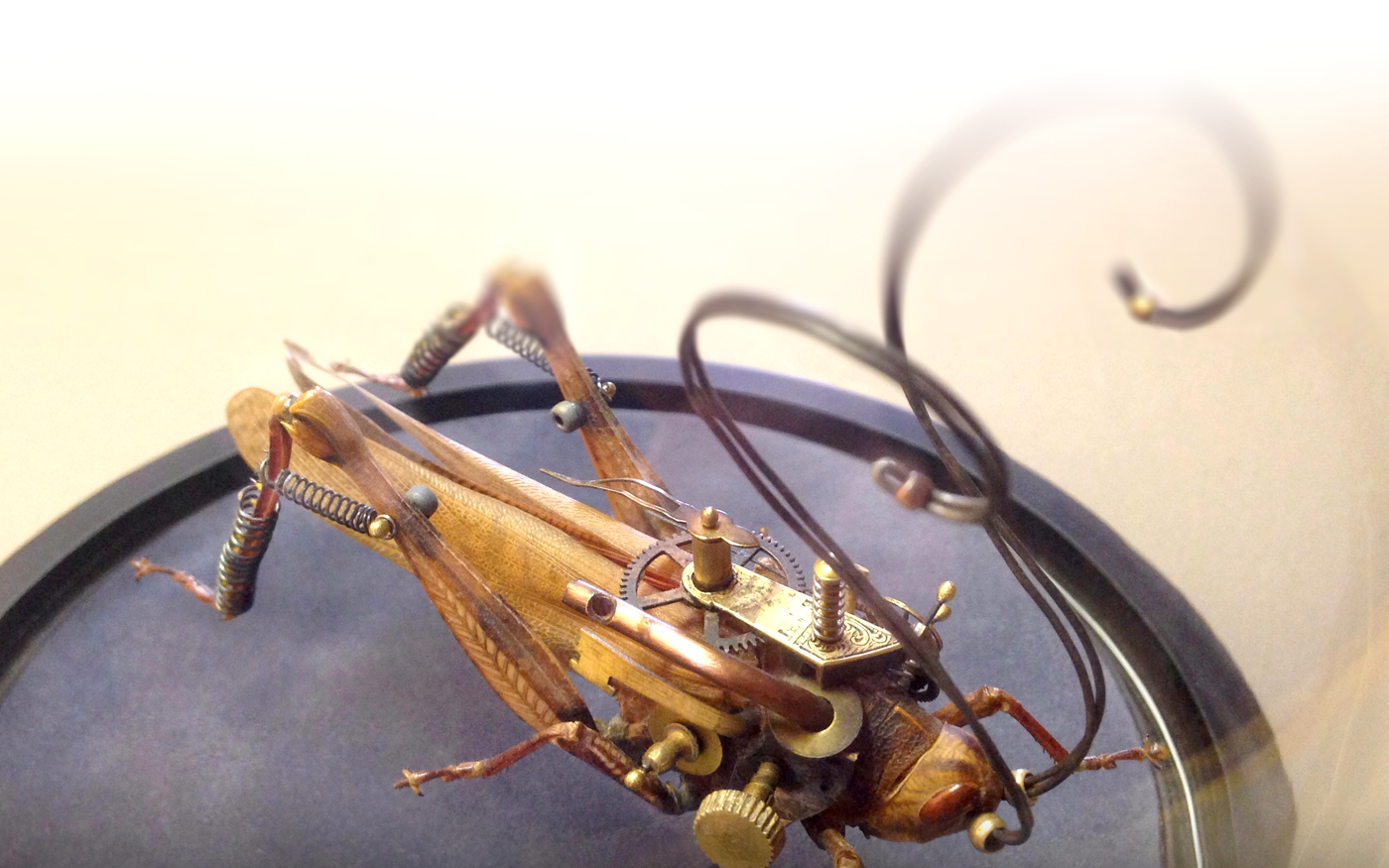Mike Libby, a multi-disciplinary artist hailing from the scenic landscapes of Maine, has a portfolio of eclectic sculptures, models, collages, drawings, and installations that radiate meticulous craftsmanship and boundless conceptual curiosity.

Libby’s Insect Lab project, born out of a love for science fiction, natural history, and storytelling, has truly turned heads and captured imaginations. It is a marriage of preserved insects and meticulously crafted mechanical components – a series that blurs the lines between science fiction and science fact.
Insect Lab began in the summer of 1998 when Libby stumbled upon a perfectly intact beetle. Drawing parallels between the beetle’s form and that of a mechanical device, Libby decided to combine the two. He dismantled his old broken Mickey Mouse wristwatch and integrated its parts into the structure of the beetle.
But where do these insects come from? Libby’s commitment to ethics and conservation is evident in his sourcing practices. Licensed Dealers provide him with safe, non-endangered specimens from various corners of the world. This ensures that his creations are not only captivating but also environmentally responsible. Additionally, Libby salvages expired insects that cross his path – a bumblebee here, a dragonfly there – all contributing to his art’s organic authenticity.
The mechanical parts, however, have a story of their own. While Libby initially used components from pocket watches and wristwatches, his palette has expanded to include a myriad of discarded machines – sewing machines, locks, lighters, and more, with an intentional emphasis on metal over plastic. Sometimes, these parts come from personal donations, breathing new life into heirlooms or artifacts with sentimental value.
You can learn more about him and his work, by visiting his websites at www.mikelibby.com and insectlabstudio.com, or by following him on Instagram.









*All images are copyright © Mike Libby, unless otherwise stated.
Disclaimer: The views and opinions expressed in this interview are those of the interviewees and do not necessarily reflect the views or positions of Public Health Landscape or Valent BioSciences, LLC.
